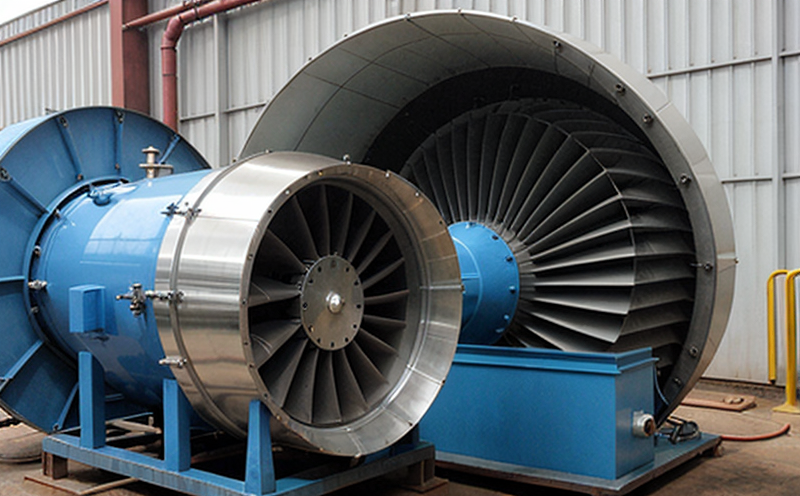Centrifugal fan inspection
The inspection of centrifugal fans is a critical component in the maintenance and compliance processes within HVAC (Heating, Ventilation, and Air Conditioning) and ventilation systems. Centrifugal fans are essential for moving air through ductwork to ensure proper airflow in buildings. These fans operate by creating pressure differences that move air from one area to another, playing a pivotal role in maintaining indoor environmental quality.
The primary purpose of inspecting centrifugal fans is to ensure they meet the required performance standards and regulatory compliance. This process involves thorough examination and testing to identify any potential issues that could affect their efficiency or safety. Regular inspections are necessary to prevent failures which can lead to increased energy consumption, reduced comfort levels in the building, and even health risks from poor air quality.
Inspectors typically follow a structured approach when conducting these inspections. This includes visual inspection for signs of wear, tear, or damage; checking electrical connections for integrity; testing fan performance parameters such as speed, static pressure, and airflow rate; and verifying adherence to relevant standards and codes. By adhering to this methodical process, inspectors can ensure that centrifugal fans continue to operate efficiently and safely.
Understanding the specific requirements set forth by industry standards like ISO 12176 for HVAC equipment is crucial in performing effective inspections. These guidelines provide a benchmark against which fan performance can be measured accurately. Compliance with these standards not only ensures optimal functionality but also contributes significantly towards energy savings, reduced maintenance costs, and enhanced occupant comfort.
For quality managers and compliance officers responsible for overseeing HVAC systems in large facilities or industrial settings, regular inspections of centrifugal fans are indispensable tools in maintaining operational integrity. R&D engineers benefit from these insights as they work on improving existing designs or developing new models that meet increasingly stringent performance criteria. Procurement professionals find value in knowing exactly what tests need to be conducted during inspection so they can source appropriate replacement parts if necessary.
When choosing a laboratory for conducting centrifugal fan inspections, it is important to select one with expertise and experience in this particular field. The right partner will provide comprehensive assessments that go beyond basic checks, offering detailed reports that help decision-makers understand current conditions and plan future upgrades or replacements effectively.
Applied Standards
| Standard | Description |
|---|---|
| ISO 12176-1:2018 | Determination of fan performance - Part 1: General principles and methods for centrifugal fans. |
| ASTM F594-13 | Specification for single-stage, high-efficiency centrifugal blowers. |
| EN 12860:2017 | Safety of industrial robots and robotic devices - Particular requirements for robot blowers and fans. |
Benefits
Ensures compliance with industry standards, which is crucial for regulatory adherence.
Improves energy efficiency by identifying inefficient components early on.
Prolongs the lifespan of centrifugal fans through preventive maintenance practices.
Reduces operational costs associated with frequent repairs or replacements due to breakdowns.
Why Choose This Test
Comprehensive assessment of fan performance parameters, ensuring optimal operation.
Expertise and experience in conducting thorough inspections tailored specifically for centrifugal fans.
Accurate reporting based on international standards, providing actionable insights for decision-makers.





